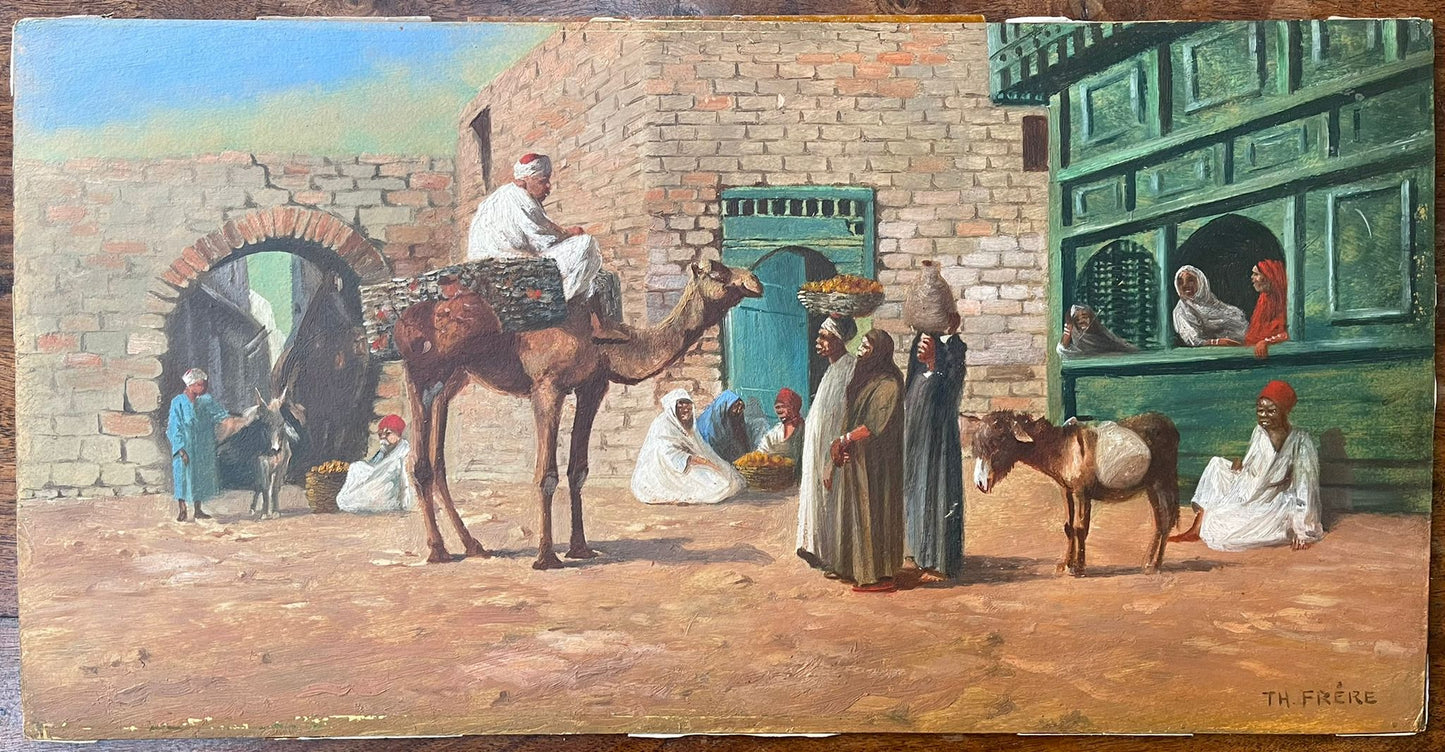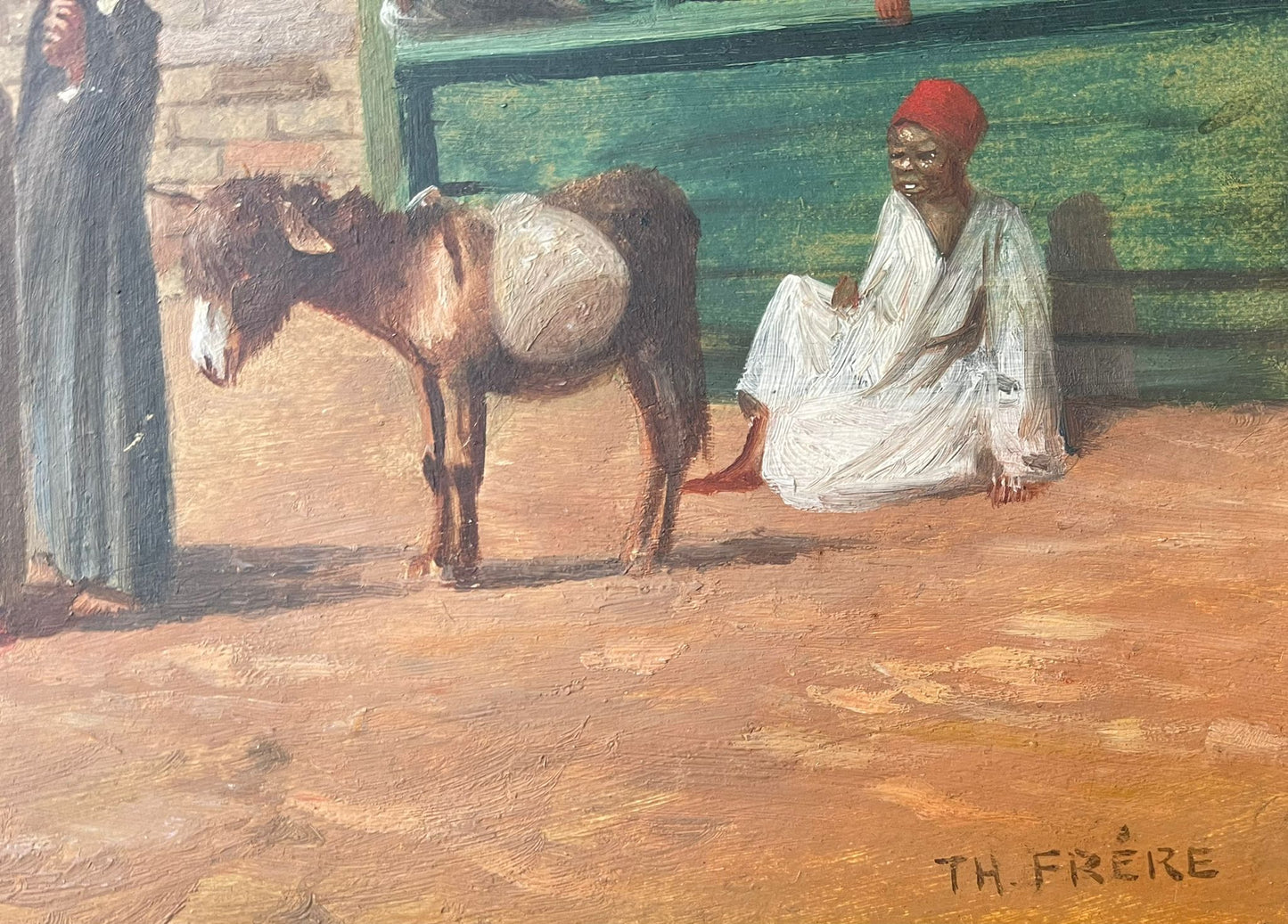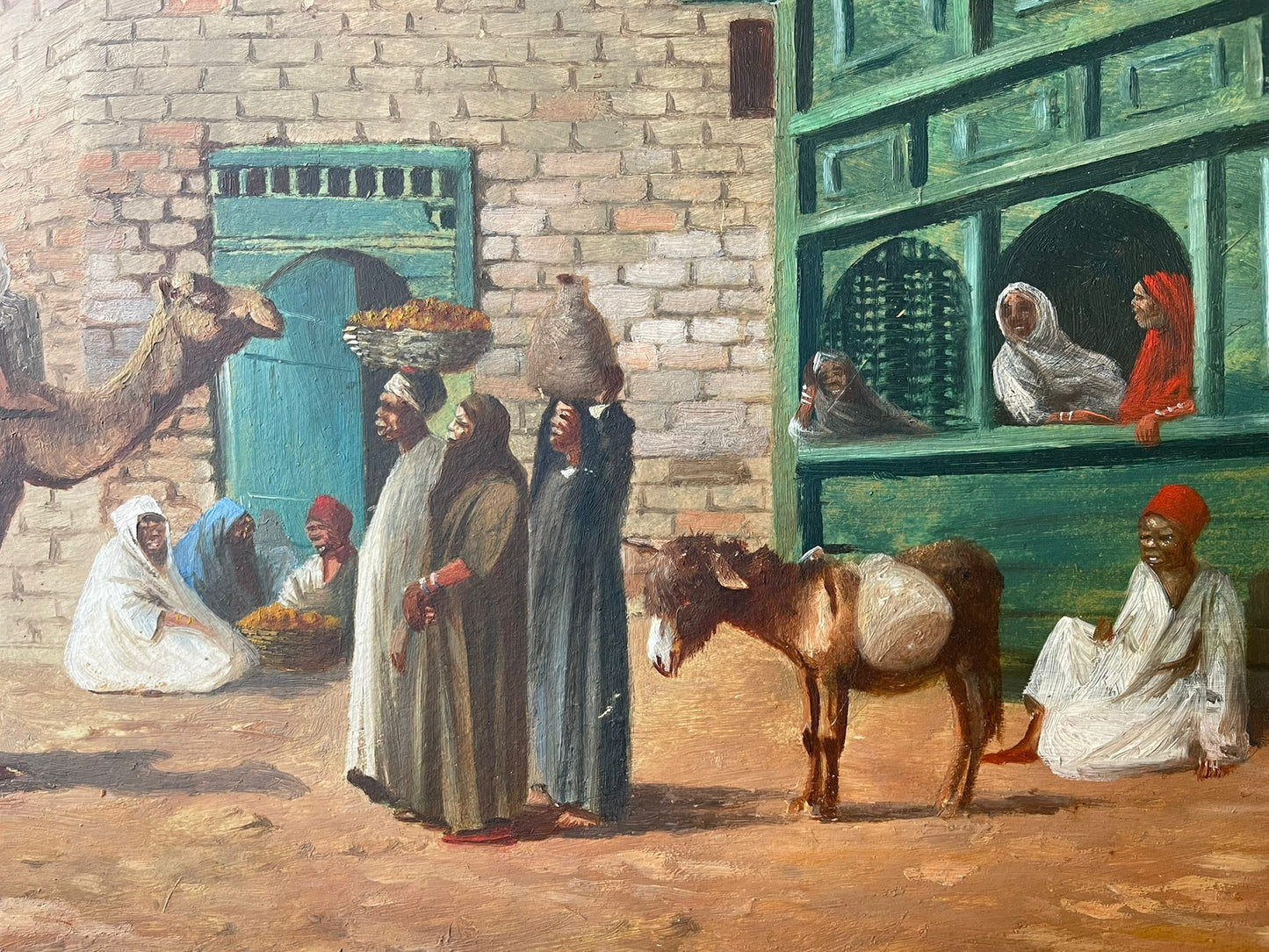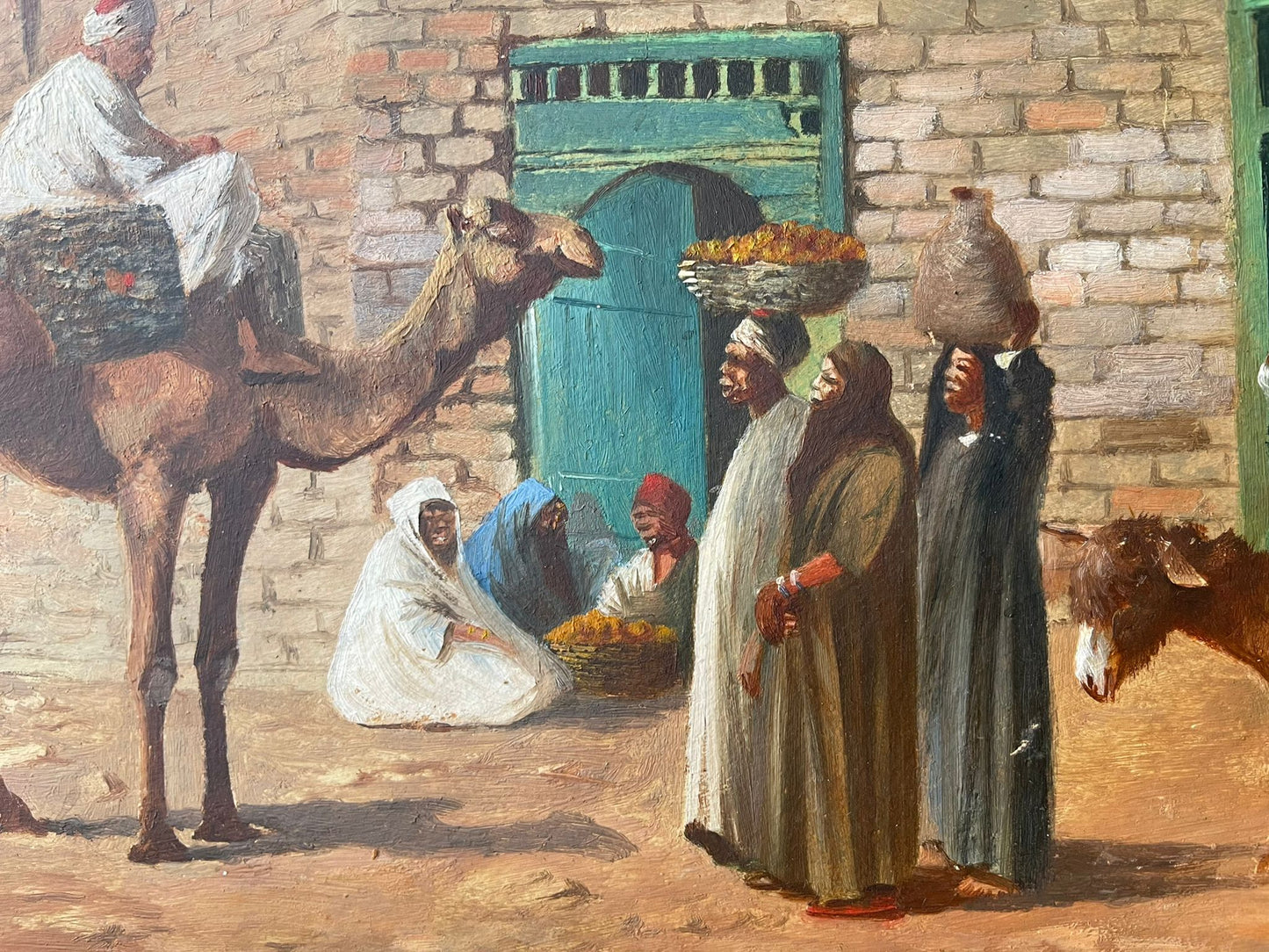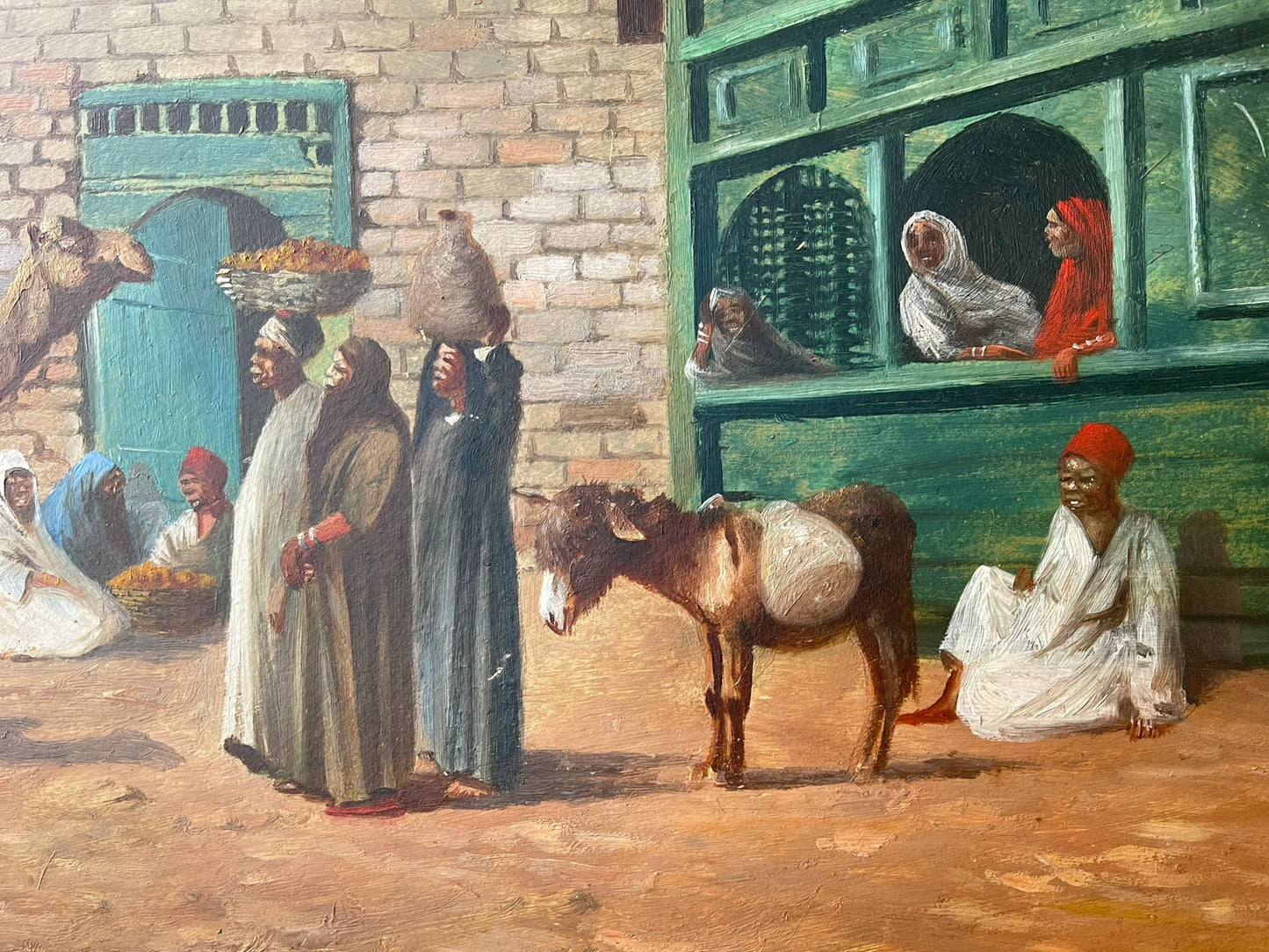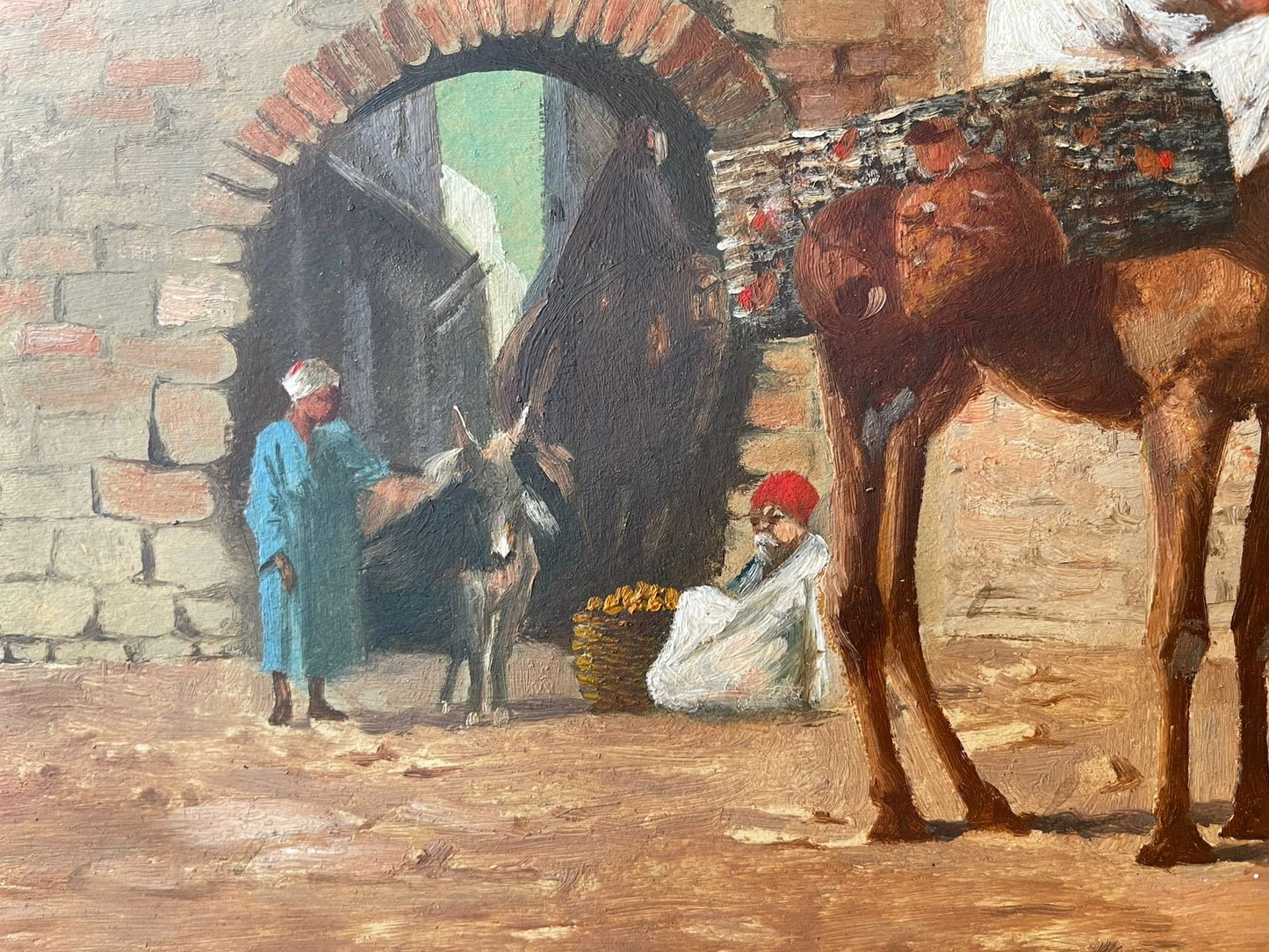Charles-Théodore Frère (1814 - 1888)
Regular price
£2,000.00 GBP
Regular price
Sale price
£2,000.00 GBP
Unit price
per
Tax included.
Couldn't load pickup availability
Charles-Théodore Frère
(1814 - 1888)
Oil on board 26cm x 51
Charles-Théodore Frère, referred to familiarly as Théodore, was born in Paris on June 21, 1814. He was the older brother of Pierre-Édouard Frère, an established genre painter who had studied under Paul Delaroche.
Today his painting Jerusalem from the Mount of Olives is in the collection of The Metropolitan Museum of Art, New York City.
Théodore began studying under Jean-Léon Cogniet and Camille Roqueplan. Shortly after beginning his studies, he left Paris and traveled through the countryside of Normandy, Alsace, and Auvergne finding some inspiration in nature.
Frère departed on his first journey to Algeria. Visions of the Algerian landscape and people would be present in nearly every one of the works he exhibited at the Salon until 1850. Clarence Cook, in his book Art and Artists of Our Time (1888), notes that:
After the conquest of Algeria by Charles X in 1830, Algeria gained national attention, not only for its French military training base and warm climate, but also for its intriguing culture. Artists and writers began to flock to this new haven, establishing a presence in Algeria that would last until 1962 when the French government proclaimed Algerian independence. However, during Frère’s time, Algeria was just beginning to be more fully explored and the government began encouraging artists to travel to the French colony by offering traveling scholarships, different from the Prix de Rome, allowing them to experiment with painting in the near East.
Charles-Théodore Frère was one of the first generation artists who committed themselves to Orientalist themes, immersing himself in this study throughout his lifetime.
A final analysis o f Frère’s and the other Orientalist’s contribution to the development of French art appeared in Lorinda Munson Bryant in French Pictures and Their Painters (London: T. Fischer Unwin, 1923, pg. 111) who wrote “We owe an inestimable debt to these French artists who have brought us in such close touch with the spirit of the near East.
(1814 - 1888)
Oil on board 26cm x 51
Charles-Théodore Frère, referred to familiarly as Théodore, was born in Paris on June 21, 1814. He was the older brother of Pierre-Édouard Frère, an established genre painter who had studied under Paul Delaroche.
Today his painting Jerusalem from the Mount of Olives is in the collection of The Metropolitan Museum of Art, New York City.
Théodore began studying under Jean-Léon Cogniet and Camille Roqueplan. Shortly after beginning his studies, he left Paris and traveled through the countryside of Normandy, Alsace, and Auvergne finding some inspiration in nature.
Frère departed on his first journey to Algeria. Visions of the Algerian landscape and people would be present in nearly every one of the works he exhibited at the Salon until 1850. Clarence Cook, in his book Art and Artists of Our Time (1888), notes that:
After the conquest of Algeria by Charles X in 1830, Algeria gained national attention, not only for its French military training base and warm climate, but also for its intriguing culture. Artists and writers began to flock to this new haven, establishing a presence in Algeria that would last until 1962 when the French government proclaimed Algerian independence. However, during Frère’s time, Algeria was just beginning to be more fully explored and the government began encouraging artists to travel to the French colony by offering traveling scholarships, different from the Prix de Rome, allowing them to experiment with painting in the near East.
Charles-Théodore Frère was one of the first generation artists who committed themselves to Orientalist themes, immersing himself in this study throughout his lifetime.
A final analysis o f Frère’s and the other Orientalist’s contribution to the development of French art appeared in Lorinda Munson Bryant in French Pictures and Their Painters (London: T. Fischer Unwin, 1923, pg. 111) who wrote “We owe an inestimable debt to these French artists who have brought us in such close touch with the spirit of the near East.
